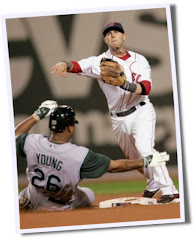In the game of baseball correct throwing mechanics are of the utmost importance. If a player can’t throw with accuracy he does his team little good out in the field. Players must constantly strive to perfect their throwing mechanics. Few players take the time necessary to become really good throwers. Great pride should be taken when a player can consistently throw to a target.
Key Points in ThrowingThe GripMany young players grip the ball with their fingers too wide apart. This affects accuracy severely reduces velocity of the throw. The fingers should be about ¼ inch apart (about the width of a yellow #2 pencil). The index and middle finger should lay across the wide seams of the ball. This grip is also known as a 4-seam fastball. The pads of the index and middle finger sit on the seam of the ball. If you think of the ball as a clock, the index and middle fingers should rest on either side of 12 o’clock and the thumb would rest straight underneath the ball at 6 o’clock. There should be "daylight" between the ball and palm of the throwing hand. This is the best grip for achieving straight backspin and avoiding any "tailing" of the ball.
Arm ActionArm action refers to the path the throwing arm travels from hand separation to release-point and follow-through. Baseball throwers must concentrate on breaking the hands and making a big sweeping motion with the arm in order to stay long with the arm going back to a good power position. Power position refers to the position where the player has the throwing arm back, level with the shoulder or higher, and bent at the elbow. The throwing-hand index and middle fingers should be point up forming a "V". The back of the throwing hand should face the thrower while the palm of the throwing hand should face away from the thrower. Practicing a good power position is essential in becoming a good thrower. The front shoulder should always point at the target and stay closed. As the player turns to throw, the glove-side elbow should be as high or higher than the throwing-side shoulder. The throwing fingers must stay pointing up through release to get good straight backspin. When throwing with a partner, young players should imagine painting a vertical line with their throwing hand from the letters on their partner’s hat to their partner’s belt buckle.
Throwing To The CircleBaseball players should always practice throwing on a downward plane to their target. When throwing with a partner, the player should focus on throwing down into "the circle". The circle is an area from the partner’s hat, right shoulder, belt buckle, and left shoulder. A player who can throw down into the circle consistently is a good thrower.
Note: A player receiving a ball should always have both hands in front of the chest with fingers pointing out and up. This makes a great target in the center of the circle.
Staying On LineThrowers should imagine a line running from their pivot foot straight through their target. As they throw, they should separate their arms on the imaginary line being careful not to let the throwing arm pass behind the line. The stride should also be on the line. Any variation from the line will decrease accuracy. As the player releases the ball he should concentrate on keeping his body on the line. Many players spin off the line when they throw instead of following-through toward their target.
Note: The chin MUST point toward the target. Where the chin faces the eyes will face and the body will follow.
Squaring the Pivot FootThe pivot foot (throwing hand-side) needs to be "square" to the target. If the player starts by facing the target when throwing the pivot foot should be opened 90 degrees toward the target to allow for the closing of the front side (hips and shoulders). Failure to do this can result in poor accuracy and velocity. Many young players do not turn their pivot foot a full 90 degrees to their target. Squaring the pivot foot should be emphasized to all players to ensure correct throwing mechanics.
It has been said many time that baseball is a game of catch, and the team that plays catch the best will usually win. As a baseball coach, teach your players the proper fundamentals of throwing and you will win more games and develop your players.
More
Baseball Throwing Tips...





